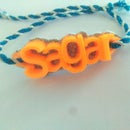Introduction: HinDeR Humanoid In-Door Explorer Robot- Part 2
Continuing from the Part 1 : https://www.instructables.com/id/HinDer-Humanoid-In-door-Explorer-Robot/
What is its purpose?
Suppose you have bought yourself a new luxurious house and you have guests visiting your place for the party you are throwing up tonight .what if you have someone guide your guests and showcase your new house to them while you handle with your long list of visitors.
No worries! HinDeR will do that for you.
Ever imagined that a robot of this kind could replace you and make things simpler for you.
That’s what HinDeR is made for.
Hardware Requirements
- Arduino Uno R3
- HCSR-04 ultrasonic sensor (x 2)
- LN-293D Motor Driver
- SG90 Servo Motor
- 16 x 2 LCD
- Infrared sensor
- 12V DC Motor (x 2)
- Soldering Iron
- Chassis , wheels (x 2),castor wheel
Stationery items
- Glue gun
- Adhesive glue
- Thick cardboard
- Cutter
- Tape
Now, we will be proceeding with the cardboard humanoid structure construction.
Step 1: Construction
Cutting square shape out of cardboard. Size (8 x 8 inches).
Making a torso using fevicol or you can use glue gun. Make sure its stick properly.
Step 2: Building a Broad Chassis
Building a broad chassis using plastic acrylic chassis and cardboard.
Attach DC motor to the chassis with help of screws.
Use spacer in between screws so that wheel can attached to the motor.
Use Castor wheel in front of chassis for the balancing the bot and it can move easily in any direction
Step 3: Building Face
Using the torso and broad chassis, we will be combining both of them now to construct the face.
Step 4: Electronics Assembly
Here, we are mounting the servo motor for movemement of the head.
The bottom PCB is for mounting LCD & arduino.
Step 5:
Connecting ultrasonic sensors, motor driver to arduino Uno.
This version of HinDeR underwent a design change .
In V1.3B an elevated design on the head was made for LCD projection. Unlike the previous design, the elevation gave an easy and decent interactive display.
Step 6: Electronics Integration
V1.3C
All hardware and electronics connection made.
Step 7: Working on Aesthetics
V1.4
Connections from head to bottom were made firm and secure.
A small hole was drilled to run wires connecting head and the arduino through the neck.
Now the torso was joined with the chassis with the aid of a glue gun.
Then we made use of spray paints to give design to HinDeR.
V1.4A
Problem
There was no way for accessing the electronics in case you wanted to troubleshoot problems or even upload a code into your arduino uno.
Solution
A small hole of the size of our arduino USB port was cut out so that we can easily alter changes in our code in future. The entire torso fixed with chassis using glue gun was cut and screws were mounted onto the chassis which held the torso.
In case of troubleshooting, one could get access to the electronics inside with ease V5.5 Fixing the head to the servo motor blades and having the head rotate was quite tricky.
To achieve this functionality in HinDeR we made use of a wheel and mounted it to the servo blades with screw and then with the help of glue gun we attached the head on the wheel and we were done with this task.
We also added an IR sensor as a backup to supplement the follow me ultrasonic sensor in case it fails.
Step 8: Next Steps
Now, we are in process of building a shield to get away with the wire mess.
Also, the body will be made using a sunboard with proper hands and legs.
Hope you got to learn from our journey so far.




